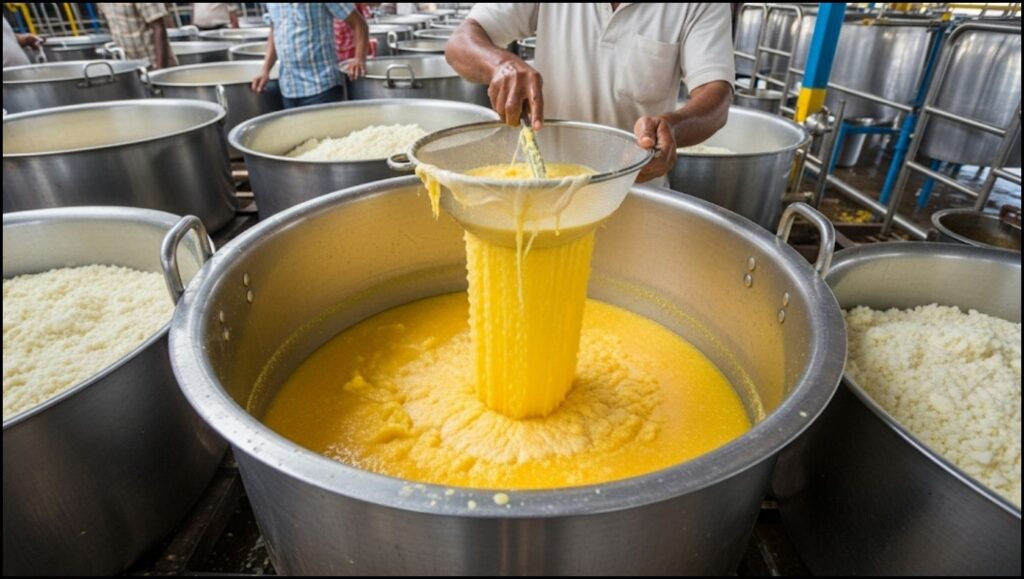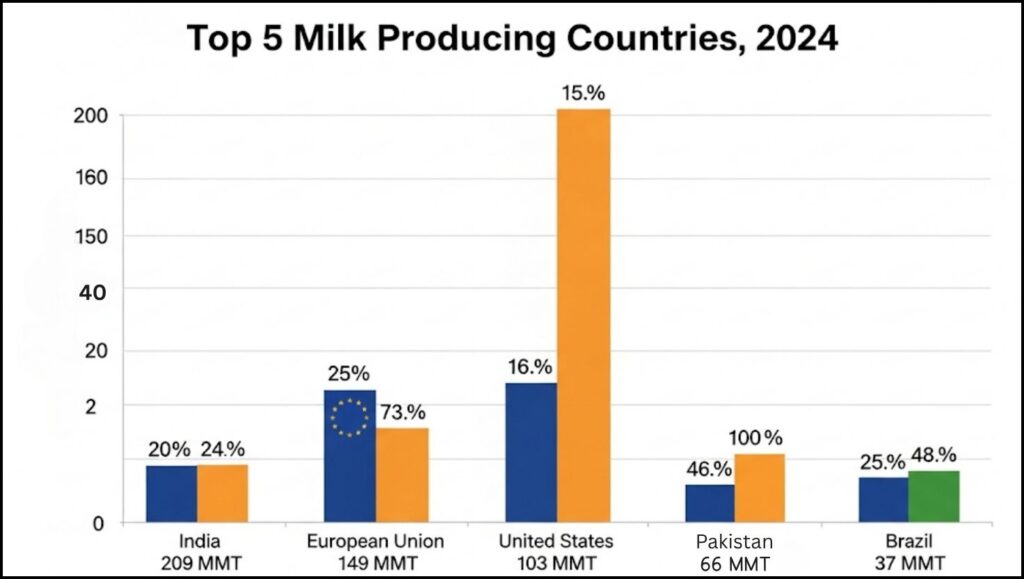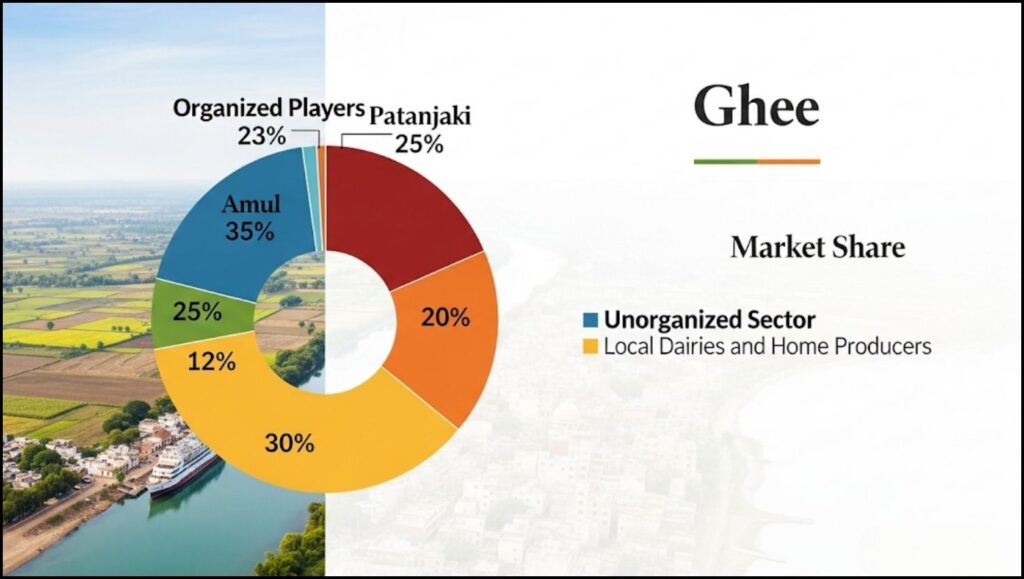India stands as the undisputed largest ghee producer in the world, a position underpinned by its colossal dairy industry and deep-rooted cultural traditions. While the vast majority of this liquid gold is consumed domestically, a growing global appetite for the product is creating new economic opportunities and highlighting its significance beyond the Indian subcontinent.

India’s dominance in ghee production is directly linked to its status as the world’s top milk producer, accounting for nearly a quarter of global milk output, according to the Food and Agriculture Organization (FAO) of the United Nations. This immense raw material base enables the large-scale production of ghee, a form of highly clarified butter prized for its rich, nutty flavor, long shelf life, and high smoke point.
The Scale of a Dairy Superpower
The foundation of India’s dairy supremacy was laid decades ago with “Operation Flood,” a rural development program launched in 1970. This initiative, led by the National Dairy Development Board (NDDB), transformed India from a milk-deficient nation into a global leader. Today, that legacy fuels the ghee industry.
“The structure of our dairy sector is unique. It is not based on large corporate farms but on millions of small-scale producers, often with just two to three animals,” explained Dr. Meenesh Shah, Chairman of the NDDB, in a recent address. This decentralized model ensures that the economic benefits of dairy, including ghee production, are distributed widely across rural communities.
While precise, consolidated figures for ghee production are often integrated into broader dairy reports, industry estimates paint a clear picture. According to a 2024 market report by the IMARC Group, the ghee market in India reached a value of approximately $16.3 billion in 2023. The report projects the market will continue to grow, driven by population increase, rising disposable incomes, and the product’s integral role in Indian cuisine and wellness practices.

Domestic Consumption and a Budding Export Market
The overwhelming majority of ghee produced in India is consumed within its borders. It is a staple cooking fat in millions of households, a key ingredient in sweets and traditional dishes, and holds significant religious importance, particularly in Hindu rituals where it is used as fuel for lamps and in sacred offerings.
“For us, ghee is not just an ingredient; it is a part of our heritage and well-being,” said Rujuta Diwekar, a Mumbai-based nutritionist and author, in an interview. “Its use is documented in ancient Ayurvedic texts for its health properties, something modern science is only now beginning to appreciate.”
However, the export market is gaining traction. Data from the Agricultural and Processed Food Products Export Development Authority (APEDA) shows a steady increase in ghee exports. Key markets include countries with large Indian diasporas, such as the United States, the United Arab Emirates, Australia, and Singapore. Furthermore, ghee is finding a new consumer base in North America and Europe, where it is marketed as a health food and an alternative for individuals with lactose sensitivities.
Challenges in Quality and Organization
Despite its scale, the Indian ghee market is not without challenges. A significant portion of production occurs in the unorganized sector, comprising small, local dairies and households. While this contributes to rural economies, it also presents issues with quality control, standardization, and adulteration.
“Adulteration with cheaper vegetable oils or animal fats is a persistent concern that undermines consumer trust,” a senior official at the Food Safety and Standards Authority of India (FSSAI) noted in a public statement. The FSSAI has been intensifying its efforts to enforce quality standards and increase testing to ensure product purity.

The organized sector, led by dairy cooperatives like Amul (the Gujarat Cooperative Milk Marketing Federation) and private brands, is capturing a growing market share by focusing on branding, consistent quality, and modern packaging. These organizations are also better positioned to meet the stringent requirements of international markets.
Looking ahead, the future of India’s ghee industry will likely involve a continued push towards formalization and modernization. As global demand for authentic and high-quality food products rises, India’s role as the largest ghee producer in the world is set to expand beyond a title of volume to one of recognized global quality.
The Global Guava Trade: How Mexico Became the World’s Largest Guava Exporter
